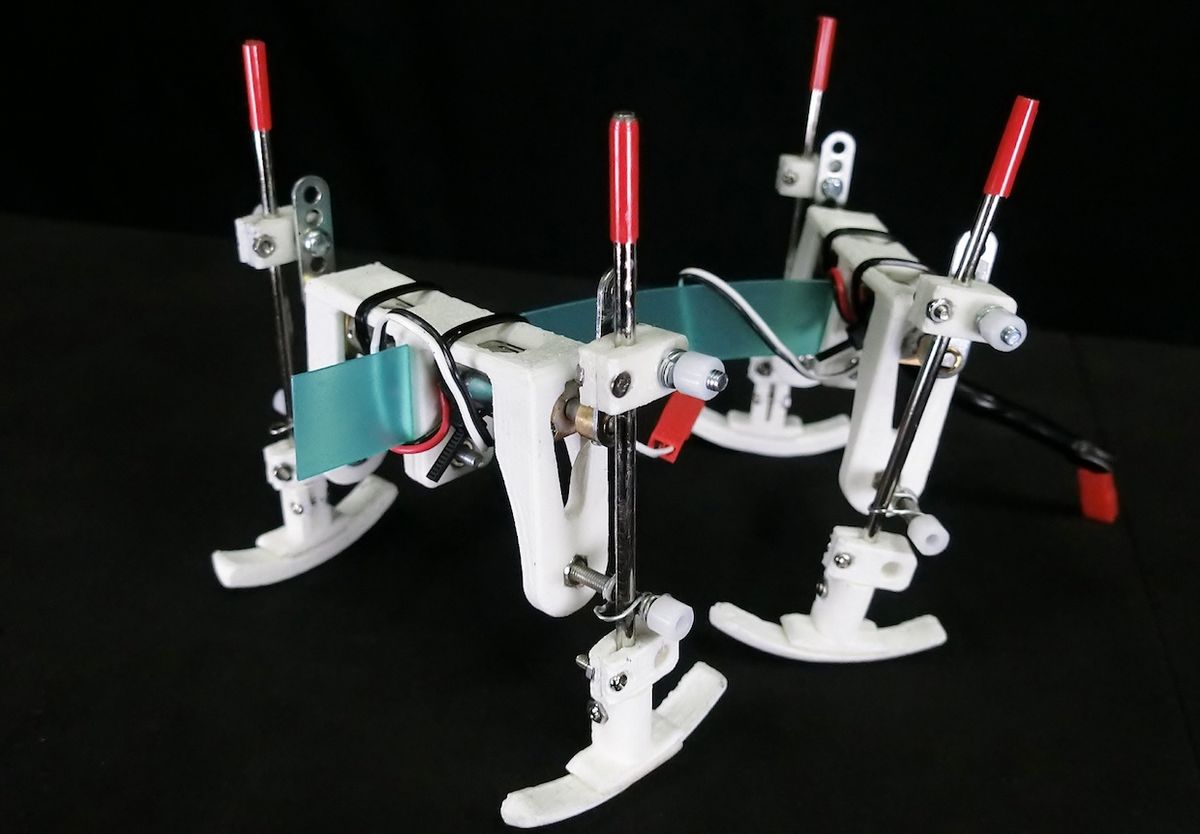Roboticists working on quadrupedal locomotion usually spend a lot of time developing control strategies to make their robots more robust and adaptable. The idea is that an advanced controller will let your robot do things on its own more effectively, such as choosing the proper gait for a given task or terrain.
Researchers from Osaka University in Japan are experimenting with a different approach—relying on interactions between the body of a quadruped and its environment to generate gaits without any sensors or controllers or, really, much of anything besides some deliberately weak leg motors.
The most remarkable point of this concept is that the mechanical passivity of a low-torque DC motor behaves as an oscillator model to generate gaits. The low-torque motor in each leg delays and adjusts the phases of the legs by exploiting only a purely physical mechanism: its own weakness.
In these experiments, the only thing that’s being changed is the input voltage to the four DC motors driving the robot’s legs. The gaits that the robot generates arise spontaneously from the interaction between the ground and the robot’s motors: The motors are weak enough that they slow down a bit when there’s a lot of force pushing on them, causing the robot’s limbs to converge on a type of movement where the motors are all synced up with each other. The patterns in which the motors sync depend on their speed, with different speeds resulting in different gaits.
The current configuration of the robot exhibited two stable gaits, at 2.5 volts and 4 volts of input. The 2.5-V input resulted in a diagonal-sequence walk, while the 4-V input yielded a transverse gallop. At 1.5 V the robot transitioned between a few different unstable gaits, and 6 V resulted in, well, you saw in the video.
The researchers think that a bunch of this gait variability is inherent to the structure of the robot, including how much its spine flexed in roll and yaw, how much the body segments weighed, and how high the center of gravity was. Essentially, the gaits generated by configuration of the robot are in some sense “natural oscillations,” and a different configuration might “oscillate” differently, leading to different gaits. The researchers also suggest that their experiments may “explain the physical aspects of the gait adjustment mechanism for quadrupeds in nature,” although that particular assertion seems like it could use a bit more evidence to back it up.
And before you say it, we know that whether this is a robot or not is probably debatable—it may technically be more accurate to call it a mechanical automaton. Its creators call it a robot, though, and the paper is being presented at the 2017 IEEE International Conference on Robotics and Biomimetics, so we’re just going to go with a close enough.
“Weak Actuators Generate Adaptive Animal Gaits without a Brain,” by Yoichi Masuda, Keisuke Naniwa, Masato Ishikawa, and Koichi Osuka from Osaka University in Japan, will be presented at IEEE ROBIO 2017 in Macau.
Evan Ackerman is a senior editor at IEEE Spectrum. Since 2007, he has written over 6,000 articles on robotics and technology. He has a degree in Martian geology and is excellent at playing bagpipes.



